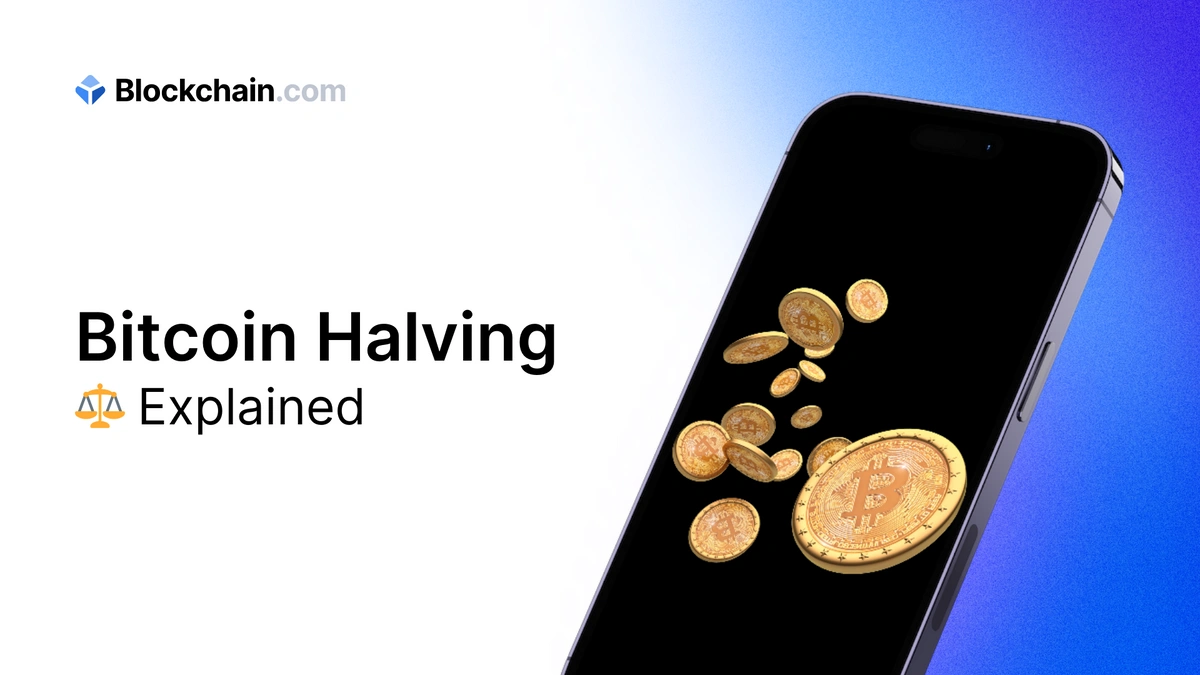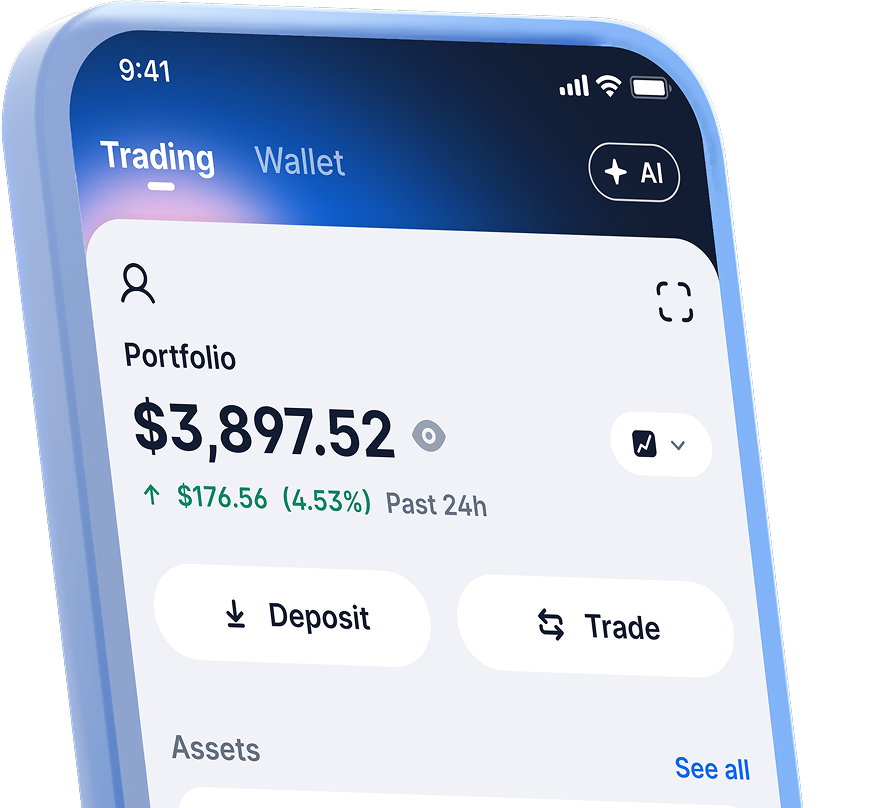It’s not too late to be early
Simply verify your ID, add a payment method, and buy crypto.

Mastering the Bitcoin Halving: A Comprehensive Guide for Crypto Enthusiasts
Explore Bitcoin's upcoming halving event in April 2024 and its impact on the cryptocurrency ecosystem in this comprehensive guide.
Did you know that Bitcoin transactions on the blockchain reached around 500,000 per day across 2023? The demand for Bitcoin is growing. One of the ways this surging demand is being managed is through Bitcoin's unique and algorithmically programmed halving events. These events play a pivotal role in controlling the cryptocurrency's supply and reducing the rate at which new bitcoins are produced, subsequently making them scarcer over time.
The next Bitcoin halving event is on the horizon, expected to take place in April 2024. To ensure that you are fully prepared for the implications of this event on Bitcoin and the broader cryptocurrency ecosystem, this article comprehensively covers everything you need to know about the impending halving event.
TIP: If you’re new to Bitcoin, you might find it helpful to read Bitcoin Explained first.
Understanding Bitcoin's Monetary Policy
To grasp the significance of the Bitcoin halving, it's essential to comprehend the unique monetary policy underpinning the world's leading cryptocurrency. In stark contrast to traditional fiat currencies that are regulated by central banks, Bitcoin operates on a decentralized network governed by a predefined protocol. A central feature of this protocol is the issuance of new bitcoins through a process known as mining.
Miners, individuals or entities who validate and secure Bitcoin transactions through solving complex mathematical puzzles, receive new Bitcoins as a reward for their efforts. However, the total number of Bitcoins issued as rewards is intentionally programmed to gradually decrease over time, an event known as “the halving”.
The Halving Mechanism and Its Significance
At the core of Bitcoin's monetary policy is the concept of halving, a predetermined event-driven process that takes place approximately every four years or after every 210,000 blocks are added to the blockchain.
This process is specifically designed to control the rate at which new bitcoins are introduced into circulation. It achieves this by halving the reward that miners receive for validating transactions and adding new blocks to the blockchain. This process began in 2009, with miners initially receiving 50 Bitcoins per block. This reward was halved to 25 Bitcoins in 2012, then to 12.5 in 2016, and so on.
The Economics of Bitcoin Halving: Supply and Scarcity
Bitcoin halving is not merely a technical event within the cryptocurrency network; it is deeply rooted in economic principles, particularly those of supply and scarcity.
By reducing the block reward during halving events, Bitcoin effectively combats monetary inflation, echoing the strategies employed by central banks to stabilize and control the supply of traditional currencies. As the rate of new Bitcoin issuance decreases, this approach aligns with the principles of controlled and predictable supply, a hallmark of Bitcoin's economic model.
The Significance of Bitcoin's "Scarcity"
Scarcity is a central concept that underpins Bitcoin's value proposition. It denotes that a resource is inherently limited, and as a result, its value rises due to the competition for access.
In many ways, Bitcoin's scarcity is comparable to precious metals such as gold, which derive intrinsic value from their scarcity and the difficulty of their extraction.
The Implications for Miners and Mining Operations
When a halving event occurs, the block reward is halved, leading to significant consequences for miners and the mining ecosystem.
Firstly, this reduction in block rewards leads to a decrease in miners' income. They earn fewer new bitcoins for the same computational effort, prompting miners to optimize operations, reduce costs, and enhance mining efficiency to remain profitable. This can result in a competitive landscape where only the most efficient miners with access to cost-effective electricity and advanced hardware can operate profitably. Consequently, miners with higher operational costs may be forced to halt their activities, potentially impacting the overall network hash rate.
The halving also intensifies competition among miners, pushing them to invest in more powerful and efficient hardware to maintain their competitive edge.
Navigating the Bitcoin Halving Cycle
The Bitcoin halving cycle presents unique challenges and opportunities for those who hold Bitcoin.
Understanding historical trends is vital, as past Bitcoin halving events have been associated with significant price rallies in the months and years following the event. However, historical performance is not a foolproof predictor of future results.
Having a long-term perspective can be advantageous, as Bitcoin's scarcity and digital gold narrative make it a potential store of value for the future. Timing the market can be challenging, and long-term investors have historically benefited from Bitcoin's overall upward trajectory.
A well-defined risk management strategy is essential for responsible purchasing given the inherent volatility of Bitcoin. Purchasers should only allocate funds they can afford to lose, ensuring that they adhere to their risk management strategy consistently.
Halving in Other Cryptocurrencies
While Bitcoin's halving events are widely recognized, it's worth noting that the concept of halving has been adopted by numerous other cryptocurrencies.
These events are designed to manage supply and control inflation, similar to Bitcoin's monetary policy. Altcoins like Litecoin, Bitcoin Cash, and Bitcoin SV have implemented their own halving mechanisms, each with its unique schedule and rules.
These altcoins contribute to the broader cryptocurrency ecosystem's evolution, embodying the principles of supply control and scarcity that are central to Bitcoin's identity.
By equipping yourself with a comprehensive understanding of Bitcoin's halving, its economic implications, and potential consequences for miners, investors, and the broader cryptocurrency ecosystem, you can navigate the evolving landscape of digital assets with greater confidence and strategic clarity.
In closing, as the demand for Bitcoin continues to surge, it is crucial to recognize the pivotal role of its unique halving events in managing and sustaining this ever-growing interest. With the upcoming Bitcoin halving event in April 2024 on the horizon, this blog has provided you with an in-depth understanding of the event's significance, Bitcoin's monetary policy, the economic principles of supply and scarcity, and the consequences for miners and purchasers.
As you navigate the dynamic landscape of digital assets, armed with this comprehensive knowledge, you can approach the world of cryptocurrencies with greater confidence and strategic clarity.
Whether you're a seasoned Bitcoin enthusiast or just starting your journey, embracing the essence of Bitcoin's scarcity and the economic mechanisms behind it will empower you to make informed decisions in this exciting and rapidly evolving space.
This information is provided for informational purposes only and is not intended to substitute for obtaining accounting, tax or financial advice from a professional advisor. The purchase of crypto entails risk. The value of crypto can fluctuate and capital involved in a crypto transaction is subject to market volatility and loss. Digital currencies are not bank deposits, are not legal tender, and are not backed by the government. Blockchain.com’s products and services are not subject to any governmental or government-backed deposit protection schemes. Legislative and regulatory changes or actions in any jurisdiction in which Blockchain.com’s customers are located may adversely affect the use, transfer, exchange, and value of digital currencies.
It’s not too late to be early
Simply verify your ID, add a payment method, and buy crypto.
Related News
Dec 5, 2024
Cheers to $100,000! Celebrating Bitcoin’ ...
Today marks a historic day for the cryptocurrency community. Bitcoin, the first ...
Nov 29, 2024
Black Friday Crypto Deals 2024
Black Friday & Cyber Monday Deals: Buy one .blockchain domain, get one free, and...
Jul 30, 2024
Celebrating 9 Years of Ethereum
Ethereum is marking its 9th anniversary! Learn about its journey from the initia...

It’s not too late to be early
Simply verify your ID, add a payment method, and buy crypto.